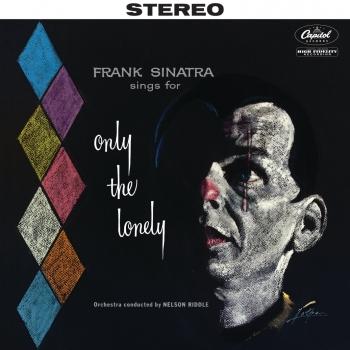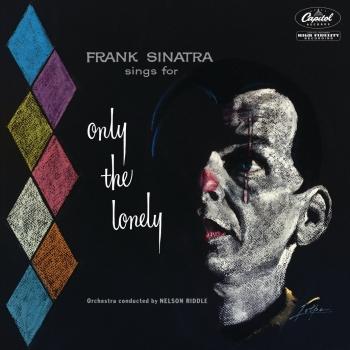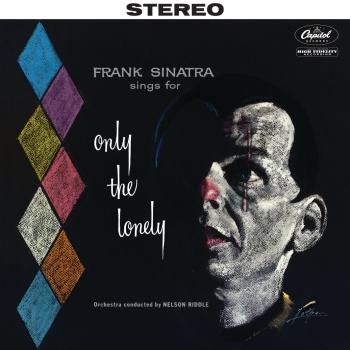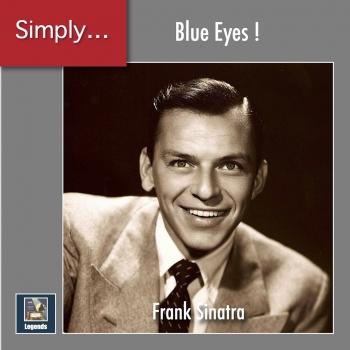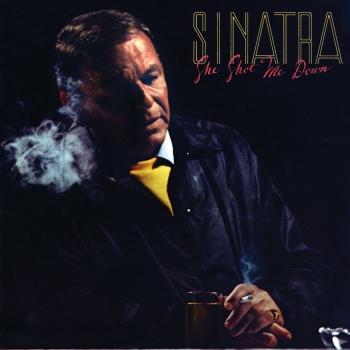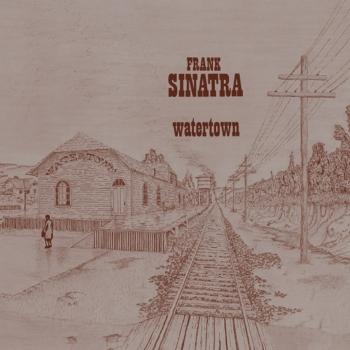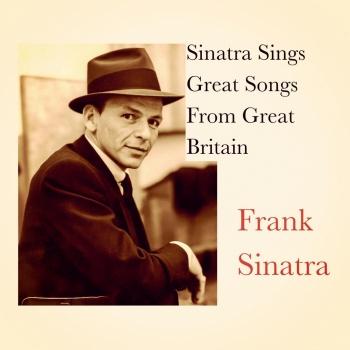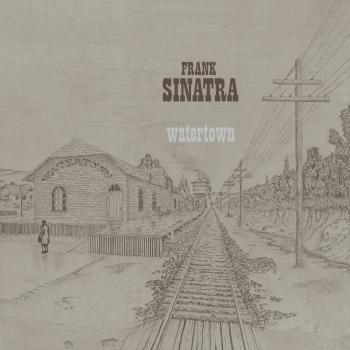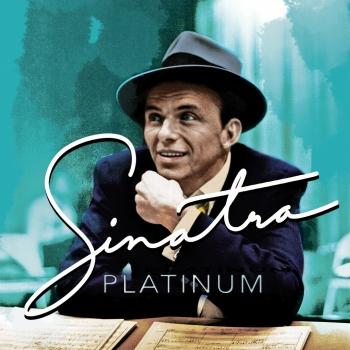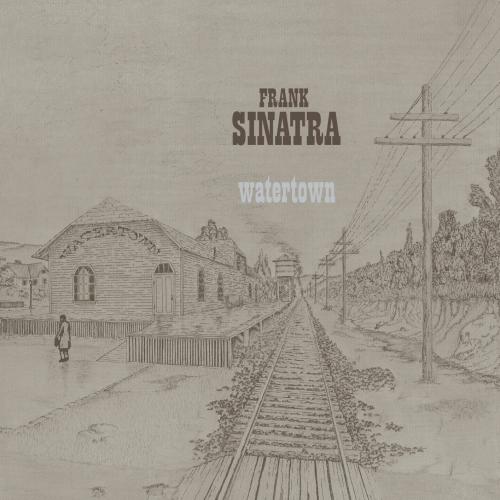
Watertown (Deluxe Edition / 2022 Mix - Remastered) Frank Sinatra
Album info
Album-Release:
1969
HRA-Release:
03.06.2022
Album including Album cover
I`m sorry!
Dear HIGHRESAUDIO Visitor,
due to territorial constraints and also different releases dates in each country you currently can`t purchase this album. We are updating our release dates twice a week. So, please feel free to check from time-to-time, if the album is available for your country.
We suggest, that you bookmark the album and use our Short List function.
Thank you for your understanding and patience.
Yours sincerely, HIGHRESAUDIO
- 1 Watertown (2022 Mix) 03:38
- 2 Goodbye (She Quietly Says) (2022 Mix) 03:12
- 3 For A While (2022 Mix) 03:16
- 4 Michael & Peter (2022 Mix) 05:13
- 5 I Would Be In Love (Anyway) (2022 Mix) 02:31
- 6 Elizabeth (2022 Mix) 03:39
- 7 What A Funny Girl (You Used To Be) (2022 Mix) 03:04
- 8 What's Now Is Now (2022 Mix) 04:06
- 9 She Says (2022 Mix) 01:53
- 10 The Train (2022 Mix) 03:32
- 11 Lady Day (2022 Mix) 02:46
- 12 Lady Day ((11/7/69) 2022 Mix) 03:41
- 13 Watertown ((Session Take) 2022 Mix) 03:43
- 14 Goodbye (She Quietly Says) ((Session Take) 2022 Mix) 03:23
- 15 The Train ((Session Take) 2022 Mix) 03:48
- 16 Lady Day ((Session Take) (11/7/69) 2022 Mix) 03:50
- 17 1970 Reprise Radio Promo #1 00:59
- 18 1970 Reprise Radio Promo #2 00:58
Info for Watertown (Deluxe Edition / 2022 Mix - Remastered)
50th Anniversary Deluxe Edition: Watertown (subtitled A Love Story) is a studio album by American singer Frank Sinatra, released in March 1970 through Reprise Records. It is a concept album centered on a man from Watertown, New York. In a series of soliloquies, the nameless narrator tells his heartbreaking story of personal loss: his wife has left him and their two boys for the lure of the big city. Watertown was produced and co-written by Bob Gaudio, one of four members of the rock band the Four Seasons, with Jake Holmes also co-writing the songs. It is the only album where Sinatra ever voiced over pre-recorded orchestral tracks. The album was released to mixed critical reviews and poor sales, with it being Sinatra's only major album release not to chart inside the top 100 of the Billboard 200. It has since been reevaluated and many consider it to be among his finest albums.
The bonus tracks include session takes from the recording, as well as two radio ads and “Lady Day,” which was not part of the Watertown concept. The updated edition has been produced by Charles Pignone from the new mixes created by longtime Sinatra engineer Larry Walsh. They are the team who were also behind the recent FSE/UMe releases Sings for Only the Lonely and Nice ‘N’ Easy.
When Watertown was first released in March 1970, neither fans nor critics were prepared for such a radical change of artistic direction from Sinatra. But in time, the album has grown in stature to gain the recognition it always deserved. In 2007, The Guardian described it as “one of [Sinatra’s] greatest masterpieces.”
Then in 2015, The Observer reflected that “it made some sense that Sinatra would attempt a story-driven concept album, considering he had helped pioneer the thematic concept LP in the 1950s. But on Watertown, Sinatra did something truly risky: he told an entire album-length story from the point of view of [a] character that is most definitely not Frank Sinatra.” Gaudio’s essay explains that Sinatra, with a level of empathy only he could achieve, was “reaching down into a man’s soul and feeling his pain and still finding hope.”
"Watertown is Frank Sinatra's most ambitious concept album, as well as his most difficult record. Not only does it tell a full-fledged story, it is his most explicit attempt at rock-oriented pop. Since the main composer of Watertown is Bob Gaudio, the author of the Four Seasons' hits "Can't Take My Eyes Off of You," "Walk Like a Man," and "Big Girls Don't Cry," that doesn't come as a surprise. With Jake Holmes, Gaudio created a song cycle concerning a middle-aged, small-town man whose wife left him with the kids. Constructed as a series of brief lyrical snapshots that read like letters or soliloquies, the culminating effect of the songs is an atmosphere of loneliness, but it is a loneliness without much hope or romance -- it is the sound of a broken man. Producer Charles Calello arranged musical backdrops that conveyed the despair of the lyrics. Weaving together prominent electric guitars, keyboards, drum kits, and light strings, Calello uses pop/rock instrumentation and production techniques, but that doesn't prevent Sinatra from warming to the material. In fact, he turns in a wonderful performance, drawing out every emotion from the lyrics, giving the album's character depth." (Stephen Thomas Erlewine, AMG)
Frank Sinatra, lead vocals
Dick Hyman, piano
Moe Wechsler, piano
Stuart Scharf, classic guitar
Jay Berliner, guitar
Ralph Casale, guitar
Willard Suyker, guitar
Vincent Bell, guitar
Richard Davis, bass
Russell George, bass
Alvin Rogers, drums
David Carey, percussion
James Rocco, background vocals
Diane Dell, background vocals
Charles Calello, conductor
Joe Scott, conductor
Recorded July 14. October 31, 1969 at Columbia, New York City
Produced by Bob Gaudio
Digitally remastered
Frank Sinatra
Warum gerade "My Way"? Warum ist "My Way" der Song, den man zuerst mit Frank Sinatra verbindet? (Neben vielleicht noch "New York, New York" oder Bert Kaempferts "Strangers In The Night".) Warum hat Sinatras Interpretation "My Way" zum Kultklassiker, zum Karaoke-Knüller werden lassen? So recht weiß das keiner.
Sinatra selbst soll die Adaption des französischen Chansons nicht besonders gemocht haben. Geschrieben als "Comme d´Habitude", umgetextet von Paul Anka, vertritt "My Way" eine ähnliche Pose wie Edith Piafs "Je Ne Regrette Rien". Als Sinatra am 30. Dezember 1968 "My Way" aufnahm, standen die USA am Abgrund: Vietnam, Bobby Kennedy, Martin Luther King. Sinatra, damals noch aktiver Demokrat, lautstarker Anti-Rassist, hatte sich gerade von Mia Farrow scheiden lassen, saß am Sterbebett seines Vaters. Trotziges Selbstmitleid überzeugt nicht in den USA, wo der Song zunächst schlechter abschnitt als in Europa. Bis ihn alle coverten: Elvis, Tom Jones, schließlich gar Sid Vicious. Trotzdem: "My Way" ist gleich Frank Sinatra - The Voice - der Mann, der so beiläufig wie genialisch die größten Standards des American Songbooks verewigt hat, die famosen Songs vom Broadway, der Tin Pan Alley, von Cole Porter oder Rodgers & Hart. Sie hat der berühmteste Einwohner von Hoboken, New Jersey bis zum Anschlag mit Bedeutung aufgeladen. Frankie gab dabei nie zuviel Gas, arbeitete besessen an Pausen und quasi-Vibrato. "Tatsächlich erfand er die Phrasierung des Popsongs", schreibt Stephen Holden im "Rolling Stone Record Guide".
In den 1940ern, in der Bigband von Tommy Dorsey, wurde Sinatra der erste Popstar, das erste Teenie-Idol. GIs an der Front sahen den vom Wehrdienst Ausgemusterten mit Siegerlächeln in der Wochenschau, umringt von schönen Frauen. Sinatra: der subtile Styler, der Anti-Macho, der von amerikanischen Ehemännern meistgehasste Sänger des Zweiten Weltkriegs. Daran änderte nichts, dass der Italo-Amerikaner 1951 Ava Gardner heiratete. Ein Karriereloch überwand er ironischerweise mit seiner Rolle im Kriegsdrama "From Here To Eternity", die ihm einen Oscar einbrachte.|Aus seinem Knebelvertrag mit Dorsey befreite ihn angeblich der Mafioso Sam Giancana. Auf der Leinwand dargestellt ist das in einer Szene von Francis Ford Coppolas "The Godfather", wo ein paar von Vito Corleones (alias Giancanas) Männern den Bandleader "überzeugen". Sinatras Tochter Nancy bekräftigt in ihrer Autobiografie jedoch, der MCA-Chef Jules Stein hätte Frankie-Boy für 75.000 Dollar freigekauft. Wie auch immer: Sinatras FBI-Akte umfasst 2403 Seiten. In den 1950ern triumphierte "The Voice" beim Capitol-Label, dem führenden Vokal-Jazz-Label seiner Zeit mit Stars wie Ella Fitzgerald, Peggy Lee, Nat "King" Cole" oder Judy Garland. Meilenstein seiner Karriere ist der 1960 gedrehte Film "Ocean´s 11" mit ihm an der Seite von Dean Martin und Sammy Davis Jr. - dem legendären Ratpack, heute würde man Künstlerkollektiv dazu sagen. (2001 drehte Steven Sonderbergh ein Remake von "Ocean´s 11", ohne Ratpack aber mit George Clooney). 1962 verließ Sinatra Capitol-Records und nahm fortan auf seinem eigenen Label auf: Reprise. Sein Duo-Album mit Count Basie, betitelt "Sinatra-Basie" war so erfolgreich, dass es einen Follow-Up gab: "It Might As Well Be Swing", arrangiert von Quincy Jones. Seine ambitionierteste LP dieser Zeit ist "The Concert Sinatra", aufgenommen mit einem 73-köpfigen Symphonie-Orchester. Kommerziell weniger schlagkräftig, dafür Klassiker: seine Alben mit Duke Ellington und Antonio Carlos Jobim: "Francis A. & Edward K." (1968) und "Sinatra & Company" (1971).
In den späten 1960ern, circa zeitgleich mit "My Way" wurde Sinatra allerdings grantig, zum unsterblichen Reaktionär, lief zu den Republikanern über. Der Manisch-Depressive verteufelte Elvis und die Beatles, coverte trotzdem "Hound Dog" und "Yesterday". Rock´n´Roll und Beat fand er "kläglich" wie ein "schlecht riechendes Aphrodisiakum". Über den Schweiß und die Tränen der neuen Generation rümpfte er kräftig die Nase, das Gebrüll von Janis Joplin und Jim Morrison waren unter seiner Würde. Nichtsdestotrotz wurde Frankie der erste Paparazzi-Schläger, ein umtriebiger Rat-Pack-Skandal-Säufer, der Prototyp aller Robbie Williamsen dieser Welt. Konnte sich aber jede Schmäh leisten, weil sein Pop zeitlos geblieben ist. Als der damals 78-jährige 1994 seinen elften Grammy, diesmal in der Kategorie "Legende" bekam, sagte ihn Bono an: "Frank ist der Vorsitzende des bösen Willens. Rock´n´Roller spielen harte Jungs, aber dieser Typ hier ist der Boss. Ich werde mich nicht mit ihm anlegen." Immer wieder haben sich Stars an seinem Erbe versucht, hoffnungslos. Dieser schmale Grat zwischen Gesang und Gespräch, dieser New Yorker-Akzent, diese Intimität gehören bis heute Ol´ Blue Eyes allein. He did it his way! Frank Sinatra starb 1998 in Los Angeles.
This album contains no booklet.










